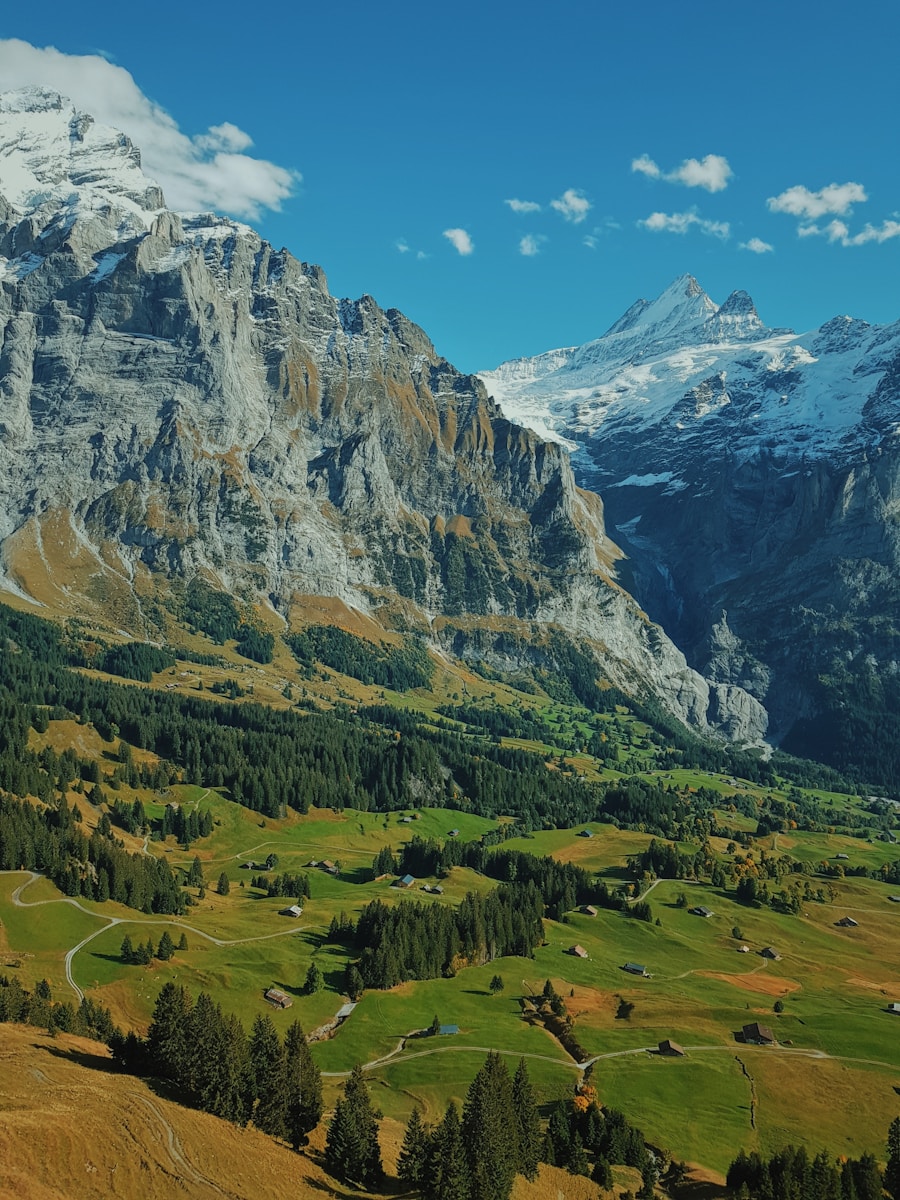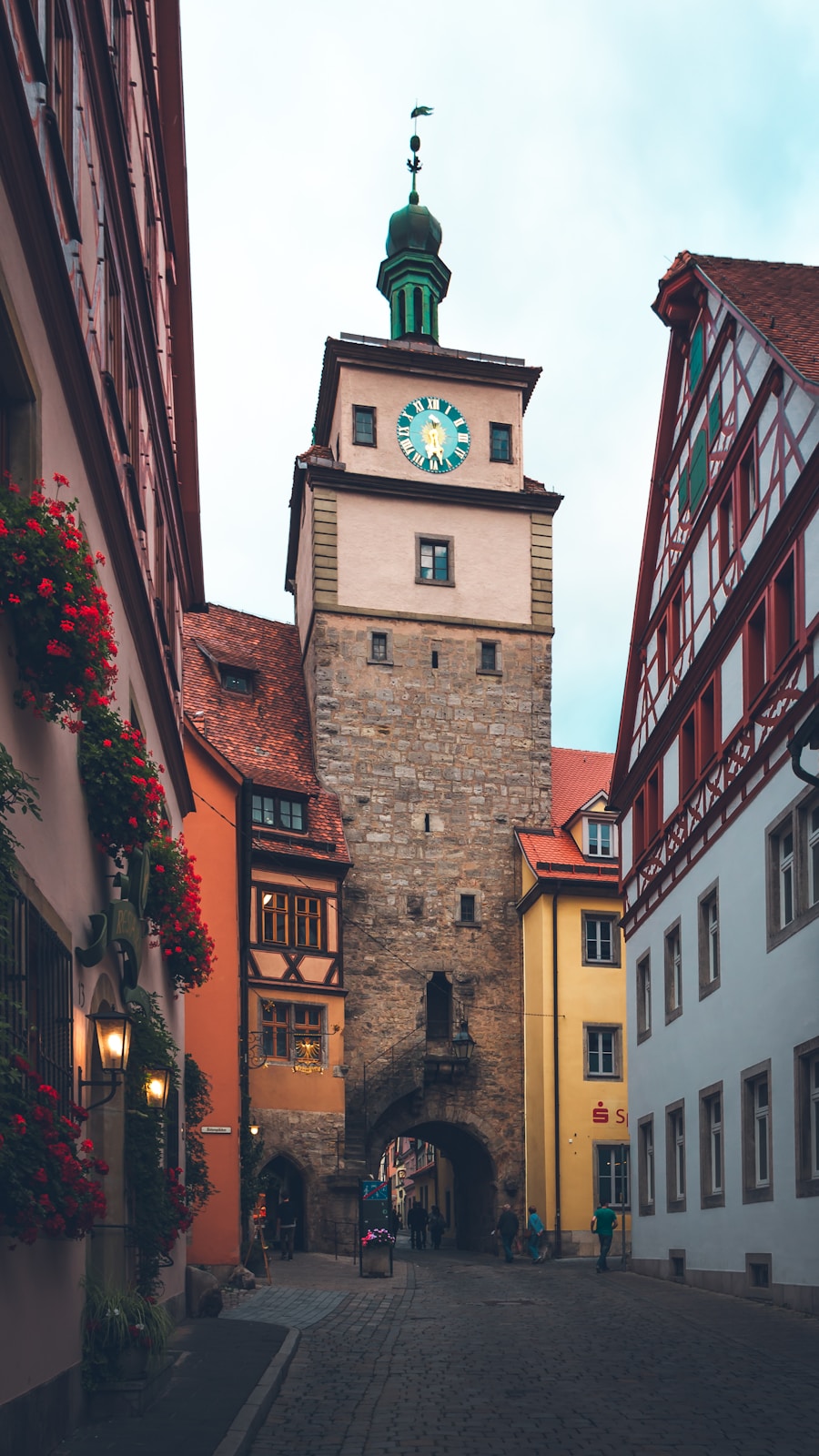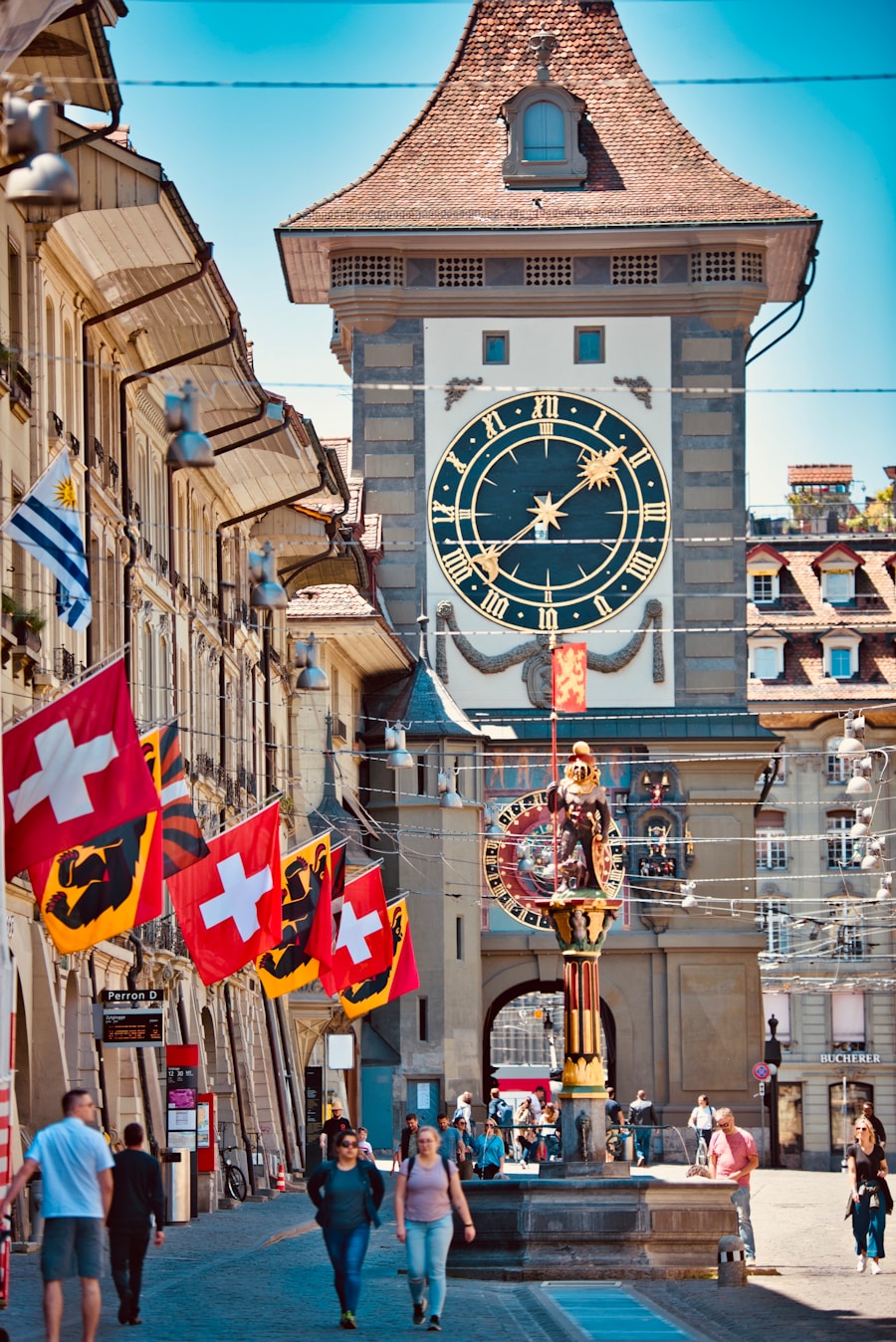Switzerland, a landlocked country nestled in the heart of Europe, is renowned for its breathtaking landscapes, rich cultural heritage, and a plethora of outdoor activities. One of the most captivating aspects of Switzerland is its distinct seasons, each offering unique experiences that cater to a variety of interests. From the vibrant blooms of spring to the serene snowscapes of winter, Switzerland’s seasonal changes create a dynamic backdrop for travelers seeking adventure, relaxation, or cultural immersion.
The country’s diverse geography, which includes majestic mountains, serene lakes, and charming villages, enhances the seasonal experience, making it a year-round destination. The Swiss climate is characterized by its temperate conditions, influenced by both the Atlantic Ocean and the Mediterranean. This results in a variety of microclimates across the country, allowing different regions to showcase their own seasonal charms.
Whether you are drawn to the lush greenery of the Alps in spring or the festive atmosphere of Christmas markets in winter, understanding the nuances of each season can significantly enhance your travel experience. This article delves into the seasonal highlights of Switzerland, providing insights into what makes each time of year special and offering practical tips for travelers.
Key Takeaways
- Switzerland experiences four distinct seasons: spring, summer, fall, and winter, each offering unique experiences for travelers.
- Spring in Switzerland is perfect for hiking and enjoying the blooming wildflowers in the Swiss Alps.
- Summer in Switzerland is ideal for outdoor activities such as hiking, swimming, and attending various festivals and events.
- Fall in Switzerland offers stunning views of autumn foliage and the opportunity to witness the wine harvest in the vineyards.
- Winter in Switzerland is the best time for skiing, snowboarding, and visiting the charming Christmas markets.
Spring in Switzerland: The Best Time for Hiking and Wildflowers
Nature’s Awakening
The Swiss Alps begin to shed their snow cover, revealing lush meadows dotted with colorful blooms such as crocuses, daffodils, and alpine anemones. This natural spectacle attracts nature enthusiasts and photographers alike, eager to capture the beauty of the awakening flora.
Hiking in Switzerland
Spring is also an ideal time for hiking in Switzerland. With trails becoming accessible as the snow melts, hikers can explore a variety of routes that cater to all skill levels. The Aletsch Glacier area, a UNESCO World Heritage site, offers stunning views and well-marked trails that wind through picturesque valleys and past glacial lakes.
Experience Swiss Culture
The moderate temperatures make it comfortable for outdoor activities, and the fewer crowds compared to summer months allow for a more intimate experience with nature. Additionally, many Swiss towns celebrate the arrival of spring with local festivals that showcase traditional music, food, and crafts, providing visitors with a taste of Swiss culture.
Summer in Switzerland: Ideal for Outdoor Activities and Festivals

Summer in Switzerland is synonymous with adventure and celebration. Lasting from June to August, this season transforms the country into a playground for outdoor enthusiasts. The warm weather invites visitors to partake in a myriad of activities such as hiking, mountain biking, paragliding, and swimming in crystal-clear lakes.
The iconic Lake Geneva and Lake Lucerne become hotspots for water sports and leisurely boat rides, while the surrounding mountains offer breathtaking panoramas that can be enjoyed from various vantage points. In addition to outdoor pursuits, summer is also a time for vibrant festivals that reflect Switzerland’s rich cultural tapestry. Events such as the Montreux Jazz Festival attract music lovers from around the globe, featuring performances by renowned artists against the stunning backdrop of Lake Geneva.
Similarly, the Fête de l’Escalade in Geneva celebrates the city’s history with parades, historical reenactments, and culinary delights. These festivals not only provide entertainment but also offer visitors an opportunity to engage with local traditions and customs. The long daylight hours and lively atmosphere make summer an enchanting time to explore Switzerland’s diverse regions.
Fall in Switzerland: Witness the Stunning Autumn Foliage and Wine Harvest
| Region | Temperature (°C) | Rainfall (mm) | Wine Production (liters) |
|---|---|---|---|
| Geneva | 12 | 80 | 1,200,000 |
| Valais | 14 | 60 | 1,500,000 |
| Vaud | 13 | 70 | 1,300,000 |
As summer fades into autumn, Switzerland undergoes a remarkable transformation characterized by vibrant foliage and a bountiful harvest season. From September to November, the landscape is painted in hues of gold, orange, and red as deciduous trees shed their leaves. This seasonal change creates a picturesque setting for leisurely walks and scenic drives through vineyards and forests.
The vineyards in regions such as Lavaux and Valais come alive during this time as grape harvests take place, offering wine enthusiasts a chance to sample some of Switzerland’s finest wines. Autumn is also an excellent time for hiking as temperatures remain mild and trails are less crowded than in summer. The panoramic views from mountain peaks are particularly stunning during this season when the clear skies provide visibility over vast distances.
Many towns host harvest festivals that celebrate local produce and wines, allowing visitors to indulge in seasonal delicacies while enjoying live music and traditional dances. The combination of natural beauty and cultural festivities makes fall a captivating time to experience Switzerland’s charm.
Winter in Switzerland: Perfect for Skiing, Snowboarding, and Christmas Markets
Winter casts a magical spell over Switzerland as snow blankets the mountains and valleys from December to February. This season is synonymous with world-class skiing and snowboarding opportunities in renowned resorts such as Zermatt, St. Moritz, and Verbier. With an extensive network of slopes catering to all skill levels, winter sports enthusiasts flock to these destinations to enjoy exhilarating runs against breathtaking alpine backdrops. The après-ski culture adds another layer of enjoyment, with cozy chalets offering warm drinks and hearty meals after a day on the slopes. In addition to winter sports, Switzerland’s Christmas markets are a highlight of the season. Cities like Zurich, Basel, and Lucerne transform into festive wonderlands adorned with twinkling lights and holiday decorations.
The atmosphere is filled with holiday cheer as carolers sing and local artisans showcase their crafts. Winter in Switzerland is not just about skiing; it’s also about embracing the festive spirit that permeates every corner of the country.
Off-Season Travel: Exploring Switzerland in the Shoulder Seasons

Advantages of Shoulder Seasons
While each season has its unique allure, traveling during the shoulder seasons—spring (March to May) and fall (September to November)—can offer distinct advantages for those looking to explore Switzerland without the crowds. During these periods, travelers can enjoy milder weather conditions while experiencing popular attractions at a more leisurely pace. Accommodations often offer lower rates during these times, making it an economical choice for budget-conscious travelers.
Seasonal Delights
In spring, visitors can witness the stunning transformation of landscapes as flowers bloom and wildlife becomes more active. The trails are less congested than in summer, allowing for peaceful hikes amidst nature’s awakening. Similarly, fall provides an opportunity to enjoy harvest festivals while taking in the breathtaking autumn colors without the hustle and bustle of peak tourist season.
Authentic Cultural Experiences
Additionally, many cultural events take place during these shoulder months, providing travelers with authentic experiences that showcase local traditions without overwhelming crowds.
Tips for Traveling to Switzerland in Each Season
When planning a trip to Switzerland based on seasonal preferences, it’s essential to consider specific tips that can enhance your experience. In spring, layering clothing is crucial due to fluctuating temperatures; mornings can be chilly while afternoons warm up significantly. A good pair of hiking boots is also recommended for exploring trails that may still have patches of snow or mud.
For summer travel, it’s wise to book accommodations in advance since this is peak tourist season. Hydration is key during outdoor activities; carrying a reusable water bottle can help you stay refreshed while exploring hiking trails or enjoying lakeside activities. Additionally, sunscreen is essential due to higher altitudes where UV exposure increases.
In autumn, packing layers remains important as temperatures can vary widely throughout the day. Consider bringing a camera or smartphone with good photography capabilities to capture the stunning fall foliage. Participating in local wine tours can provide insight into Swiss viticulture while allowing you to taste some exceptional wines.
During winter visits, investing in quality winter gear is vital for comfort on the slopes or while exploring snowy towns. Many ski resorts offer rental equipment if you prefer not to bring your own gear. Additionally, checking local event calendars can help you find Christmas markets or winter festivals happening during your stay.
Choosing the Best Time to Visit Switzerland for Your Travel Preferences
Switzerland’s diverse seasons offer something for every type of traveler—whether you seek adventure in summer’s warmth or cozy charm during winter’s chill. Each season presents unique opportunities for exploration and cultural engagement that can cater to various interests and preferences. By understanding what each season has to offer and planning accordingly, visitors can create unforgettable memories amidst Switzerland’s stunning landscapes and rich traditions.
Ultimately, choosing when to visit Switzerland depends on personal interests—be it hiking through wildflower-strewn meadows in spring or enjoying festive markets under twinkling lights in winter. Regardless of when you choose to visit, Switzerland promises an enchanting experience filled with natural beauty and cultural richness that will leave a lasting impression long after your journey concludes.
When planning your trip to Switzerland, it’s important to consider the best time to visit in order to make the most of your experience. According to a helpful article from TakeTravelInfo, the ideal time to travel to Switzerland is during the summer months of June to August when the weather is warm and the landscapes are lush and vibrant. This article provides valuable insights and tips for travelers looking to explore the beauty of Switzerland during this peak season.
FAQs
What is the best time to travel to Switzerland?
The best time to travel to Switzerland is during the summer months of June to August, when the weather is warm and the alpine landscapes are in full bloom. However, Switzerland is also a popular destination for winter sports, so the winter months of December to February are also a great time to visit for skiing and snowboarding.
What is the weather like in Switzerland during the summer?
During the summer months, Switzerland experiences mild to warm temperatures, with average highs ranging from 20°C to 25°C (68°F to 77°F). The weather is generally sunny and pleasant, making it ideal for outdoor activities such as hiking, biking, and sightseeing.
What is the weather like in Switzerland during the winter?
In the winter, Switzerland experiences cold temperatures and snowfall, especially in the alpine regions. Average temperatures range from -2°C to 7°C (28°F to 45°F), making it perfect for winter sports such as skiing, snowboarding, and snowshoeing.
Are there any specific events or festivals to consider when planning a trip to Switzerland?
Switzerland hosts a variety of events and festivals throughout the year, including the Montreux Jazz Festival in July, the Locarno Film Festival in August, and the Fête de l’Escalade in December. These events offer a unique cultural experience for visitors.
What are the peak tourist seasons in Switzerland?
The peak tourist seasons in Switzerland are during the summer months of June to August and the winter months of December to February. During these times, popular tourist destinations can be crowded, and accommodation prices may be higher.
Is it possible to visit Switzerland during the shoulder seasons?
Yes, visiting Switzerland during the shoulder seasons of spring (April to May) and autumn (September to October) can be a great option. The weather is still pleasant, and there are fewer tourists, making it an ideal time to explore the country at a more relaxed pace.
